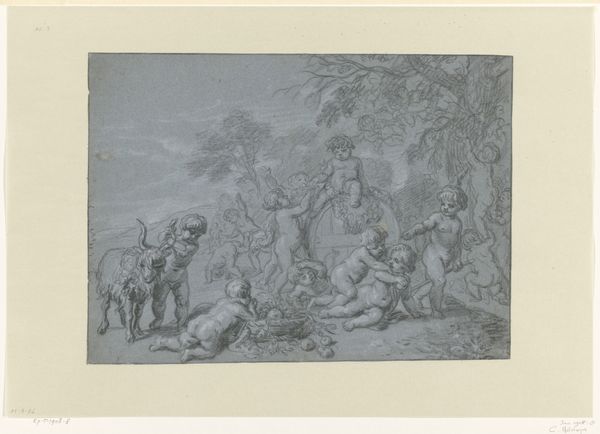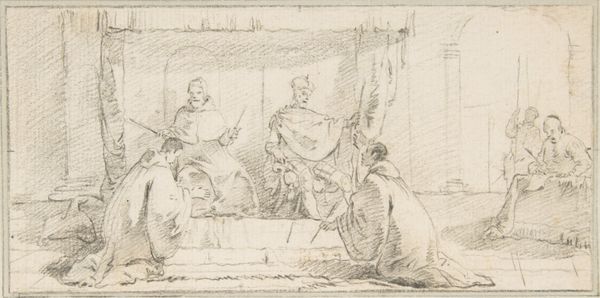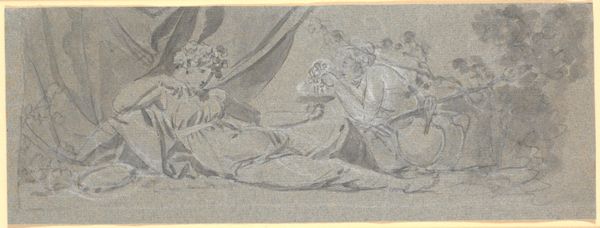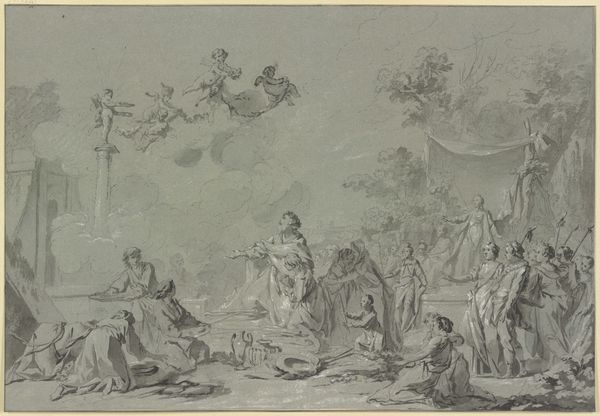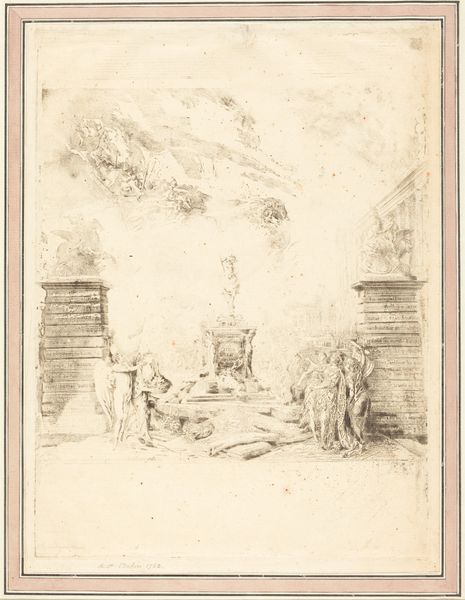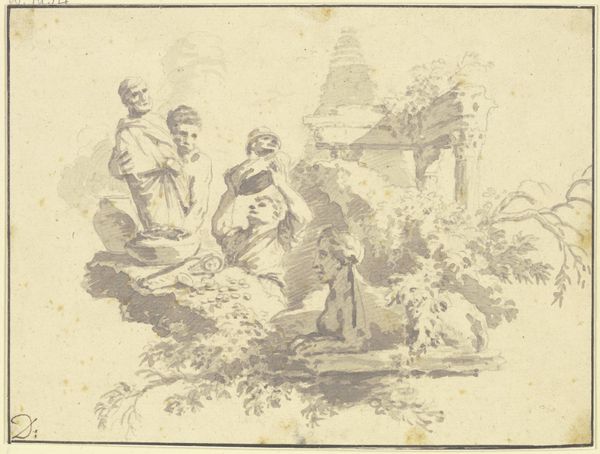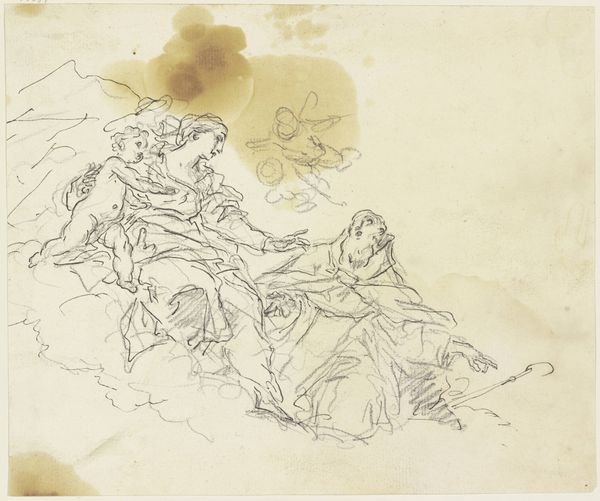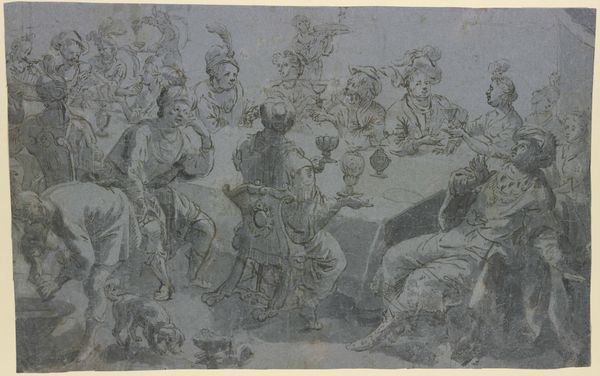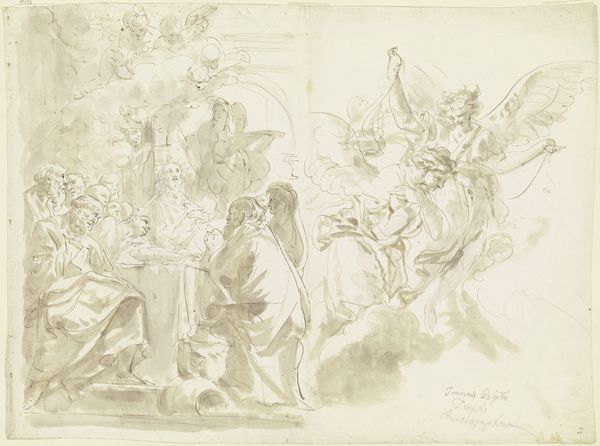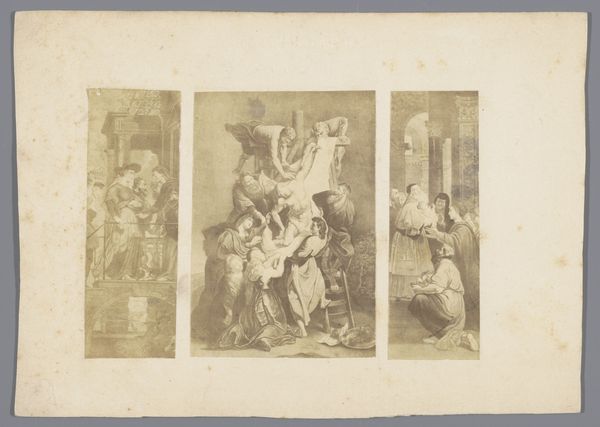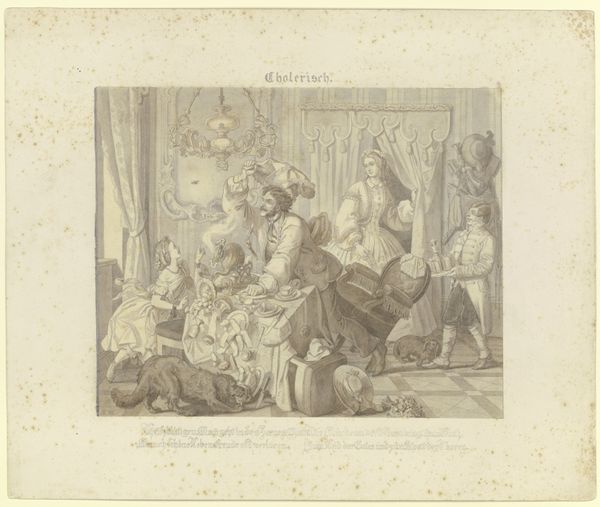
drawing, ink, pen
#
drawing
#
baroque
#
etching
#
ink
#
pen
#
genre-painting
#
history-painting
#
watercolor
Copyright: Public Domain
Editor: Here we have Carlo Maratti's "Soldiers Playing Cards," a pen, ink, and watercolor drawing housed at the Städel Museum. I'm struck by its dreamlike quality; the figures almost seem to be fading into the blue paper. What do you see in this piece? Curator: I see a fascinating meditation on leisure, labour, and chance. Playing cards, a seemingly frivolous act, becomes a powerful symbol when juxtaposed with the soldier's role. Think about what the suit of swords usually symbolizes and then, think about what that suit might mean in this context. Editor: So, it’s more than just downtime. It's commenting on their fate? Curator: Precisely! Cards introduce the element of unpredictable fate into the regimented lives of soldiers. They also suggest a microcosm of society—chance, strategy, and hierarchy playing out in miniature, mirroring the larger power dynamics they are caught within. Note the gaze of the figures behind. Editor: That’s interesting; they appear both present and detached from the game. Curator: Indeed. Are they ghosts of the future, onlookers burdened by the consequences of such choices? Or do they suggest cultural memory – how does this drawing participate in representing conflict? Consider its emotional, cultural, and psychological resonance across time. What stays the same? Editor: So much to unpack from what at first appeared to be a simple scene. The way those symbols and perspectives are woven together really transforms it. Curator: Exactly. We see layers of meaning embedded in what seems like a candid depiction of everyday life. And what initially feels like an image slowly disappearing off the paper slowly reappears. Editor: I’ll never look at a simple drawing of playing cards the same way again. Curator: Wonderful. The power of iconography lies precisely there: it invites us to see the deeper currents running beneath the surface of ordinary moments.
Comments
No comments
Be the first to comment and join the conversation on the ultimate creative platform.

